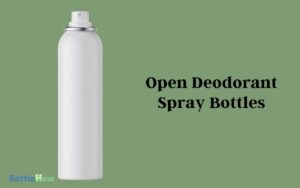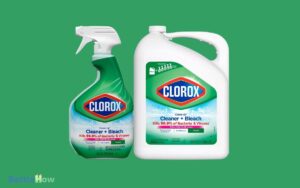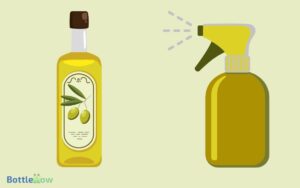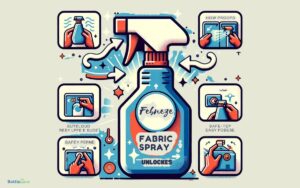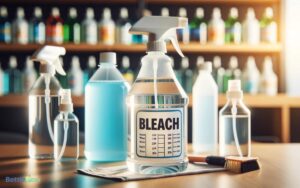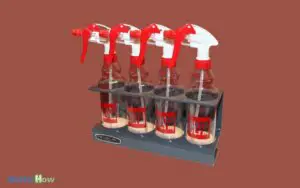Can You Put Latex Paint in a Spray Bottle? Yes!
Yes, you can put latex paint in a spray bottle, but you’ll need to thin it properly first. Due to its thicker composition, latex paint requires careful thinning to make certain it sprays evenly and doesn’t clog the nozzle. Use a precise water-to-paint ratio, typically 10-20% water based on the paint volume.
Guarantee the paint consistency aligns with your spray bottle’s capabilities, choosing one that can handle thinned paint, like an HVLP sprayer for better accuracy.
After thinning, always test the paint on a small area to confirm smooth application. Mastering these adjustments will enhance your spraying technique and outcomes.
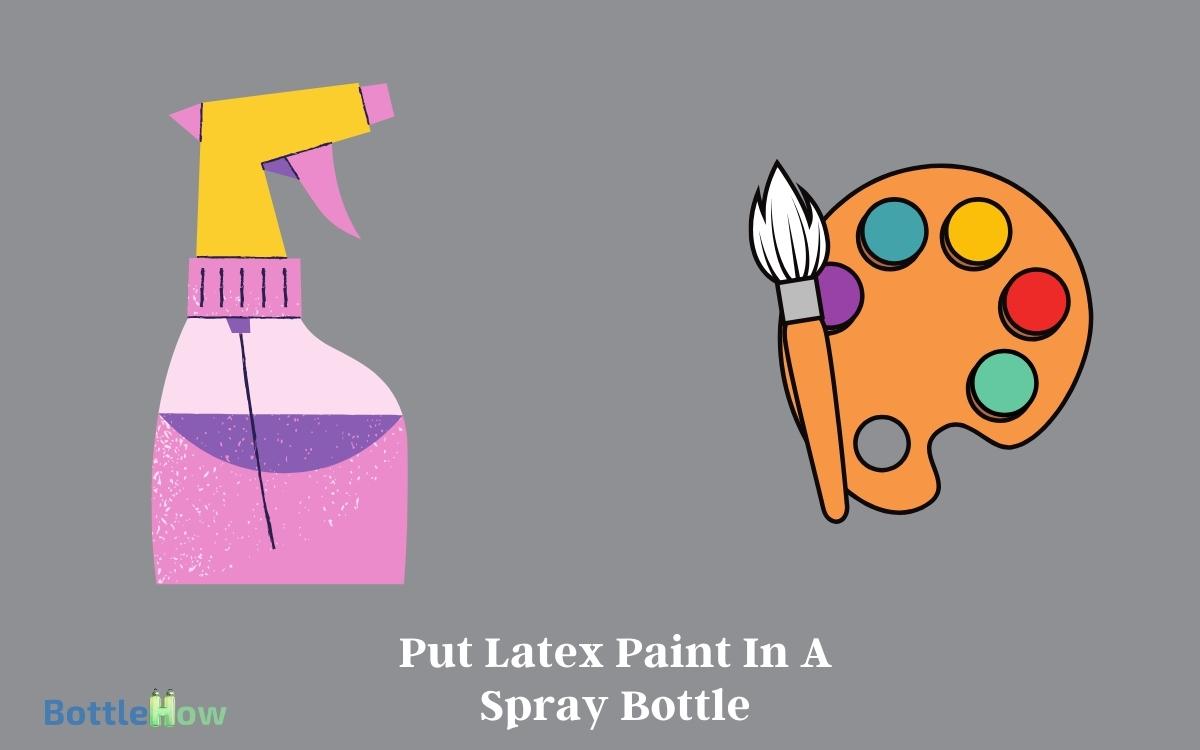
Key Takeaways
Understanding Latex Paint Properties
Latex paint, known for its quick-drying properties and water-based formulation, offers excellent durability and easy cleanup.
When you’re aiming to serve others by providing a professional finish, understanding the viscosity and consistency of latex paint is vital.
This type of paint typically has a heavier composition compared to oil-based or acrylic paints, which affects its flow and application characteristics.
It’s important to recognize that the pigments and binders in latex paint require effective agitation to maintain uniformity throughout the project.
Additionally, latex paint’s adherence to surfaces is influenced by ambient temperature and humidity; ideal application conditions generally involve a clean, dry surface and moderate environmental conditions.
Mastery of these properties guarantees precision in application and a high-quality finish for those you’re serving.
Types of Spray Bottles
To guarantee the best application of latex paint using a spray method, selecting the right type of spray bottle is essential.
You’ll find mainly three types suitable for your needs: airless spray bottles, HVLP (High Volume Low Pressure) sprayers, and compressed air sprayers. Each type offers unique benefits depending on your project’s scope and precision requirements.
Airless spray bottles utilize a pumping action to atomize paint without using air, allowing for a thicker coat in a single pass.
HVLP sprayers, on the other hand, use a turbine to generate a high volume of air at low pressure, enhancing accuracy and reducing overspray.
Compressed air sprayers offer versatility with adjustable pressure settings, making them ideal for detailed work on complex surfaces. Consider these options to optimize your paint application process.
Preparing Latex Paint for Spraying
Before you begin spraying, you’ll need to thin your latex paint to the correct viscosity. Make sure you select a spray bottle that can handle the thinned paint without clogging.
Thin Paint Properly
For best results in spraying, you must first properly thin the latex paint using a specific ratio of water to paint.
Typically, a ratio of one part water to ten parts paint is effective, but this can vary depending on the paint’s viscosity and the manufacturer’s recommendations.
Begin by stirring the paint thoroughly to guarantee any settled particles are evenly distributed. Gradually add water and stir consistently until the desired consistency is achieved.
It’s essential to achieve a homogeneous mixture; uneven thinning can lead to poor spray performance and suboptimal coverage.
Always use clean, lukewarm water to facilitate ideal mixing. Testing the thinned paint on a small, inconspicuous area can help you assess the sufficiency of thinning before proceeding with your main project.
Choose Right Spray Bottle
Having properly thinned your latex paint, you’ll now need to select an appropriate spray bottle designed to handle the consistency and pressure required for a smooth application.
Opt for a bottle with adjustable nozzle settings, which allows you to control the spray pattern and droplet size, essential for achieving uniform coverage.
Confirm the bottle’s material can withstand solvents in latex paint, typically PET or HDPE plastic, to avoid degradation over time.
Selecting a sprayer with a robust pump mechanism is essential. This feature ensures it can generate and maintain sufficient pressure to spray the paint evenly without clogging.
Consider the ergonomics of the spray bottle as well, particularly if you’ll be handling it for extended periods, to prevent fatigue and ensure effective application.
Test Spray Consistency
Once you’ve selected the appropriate spray bottle, test the paint’s consistency by performing a few sample sprays to guarantee smooth and uniform delivery.
To maximize performance and prevent clogging, consider these technical adjustments:
- Dilution: Thin the paint with the correct ratio of water or suitable thinner. Typically, a 10-20% addition by volume is effective.
- Straining: Pass the paint through a fine mesh filter to remove any clumps and impurities.
- Nozzle Check: Verify that the spray bottle’s nozzle is clean and the right size for latex paint.
- Pressure Adjustment: Adjust the spray pressure to match the paint’s viscosity.
- Test Area: Always spray on a scrap material first to check for texture and coverage consistency.
Viscosity and Consistency Adjustments
You’ll need to thin your latex paint to guarantee it sprays evenly from a bottle. Achieving the best paint consistency involves careful measurement and adjustment of the paint-to-thinner ratio.
Test the spray performance periodically to verify that the viscosity meets the application’s specific requirements.
Thinning Latex for Spraying
To guarantee top performance when spraying, you must adjust the viscosity of latex paint by thinning it appropriately.
Thinning not only guarantees the paint flows smoothly through the nozzle but also prevents clogging and uneven spray patterns.
Here’s how you can achieve the right viscosity:
- Water Addition: Gradually add water, no more than 10% of the paint volume.
- Stirring: Thoroughly stir the mixture to make sure even consistency.
- Testing: Conduct a flow test to check the paint’s readiness for spraying.
- Adjustments: Make minor adjustments based on the test results.
- Straining: Always strain the thinned paint to remove any lumps that could block the spray mechanism.
These steps will help you serve your project needs efficiently and effectively.
Optimal Paint Consistency
Achieving the ideal paint consistency requires precise adjustments to its viscosity, ensuring it sprays evenly and adheres properly.
You’ll need to modify the paint’s viscosity by carefully adding a suitable thinner, typically water for latex paints. It’s vital to incrementally mix the thinner, monitoring the paint’s flow properties.
Aim for a viscosity that allows the paint to pass smoothly through the spray bottle’s nozzle without clogging, yet retains enough body to form a uniform coating on your target surface.
Balance is key; overly thinned paint might run or sag, while under-thinned paint mightn’t atomize efficiently, leading to poor coverage.
Adjust in small increments and stir thoroughly to achieve a homogenous mixture, ensuring professional results in your painting endeavors.
Testing Spray Performance
Once you’ve adjusted the viscosity of your latex paint, test the spray performance to make sure it meets the application’s specific needs. This step is essential to guarantee a smooth, even coat without clogging the spray mechanism.
Here’s how you can evaluate spray performance effectively:
- Spray Pattern Consistency: Check for uniform distribution and absence of streaks.
- Nozzle Functionality: Ensure the nozzle sprays consistently without sputtering.
- Coverage Test: Apply on a test surface to assess opacity and coverage area.
- Drying Time Evaluation: Monitor the time it takes for the paint to dry, ensuring it aligns with expected benchmarks.
- Adhesion Check: Verify that the paint adheres well to the surface without peeling or cracking after drying.
Steps to Thin Latex Paint
Prior to starting the thinning process, make sure you have the correct ratio of water to latex paint, typically a 10% addition of water for proper spray consistency.
Stir the paint thoroughly before and after adding water to guarantee an even consistency throughout. It’s essential to introduce the water slowly while continuously stirring to prevent clumping.
Here’s a quick guide:
| Step | Action | Detail |
|---|---|---|
| 1. Preparation | Gather materials | Latex paint, water, stir stick, measuring cup |
| 2. Mixing | Add water | 10% of the total volume of paint |
| 3. Stirring | Mix thoroughly | Ensure even consistency |
| 4. Testing | Check consistency | Should run smoothly off the stir stick without clumping |
| 5. Adjustment | Add more water if necessary | Not exceeding 15% of the total paint volume |
Adjust the mixture as needed based on your test sprays, making sure the paint flows freely through the spray mechanism without any clogs.
Choosing the Right Spray Nozzle
After thinning your latex paint, selecting the appropriate spray nozzle is crucial for achieving a smooth and even application. The right nozzle guarantees that the paint is atomized effectively, allowing for a professional finish.
Here are key factors to take into account when choosing a spray nozzle:
- Orifice Size: Choose a nozzle with an orifice size that matches the viscosity of your thinned paint.
- Spray Pattern: Opt for a nozzle that offers a uniform spray pattern to avoid uneven coats.
- Material Compatibility: Make sure the nozzle material is resistant to wear and corrosion from latex paint.
- Filter Compatibility: Select a nozzle that can work with a filter to prevent clogging.
- Adjustability: A nozzle with adjustable settings allows for greater control over spray density and width.
Application Techniques for Spray Bottles
To achieve best results when using a spray bottle for latex paint, it’s important to master various application techniques.
First, make sure you’re working with a consistent spray pattern. Adjust the nozzle for a fine mist to avoid uneven coverage and drips.
Hold the bottle approximately 6 to 8 inches from the surface, maintaining a steady hand to ensure uniform application.
It’s vital to apply thin coats rather than a single heavy coat to promote faster drying and reduce the risk of runs. Allow each layer to dry completely before applying the next.
Additionally, continuously agitate the bottle to keep the latex paint well mixed and to prevent clogging of the nozzle, which can disrupt the spray consistency.
Common Spraying Challenges
Despite careful preparation, you may encounter several common challenges when spraying latex paint, such as nozzle clogs and uneven spray patterns.
To guarantee peak performance and client satisfaction, consider these technical aspects:
- Nozzle Clogs: Latex particles can accumulate, blocking the spray mechanism. Regular cleaning is essential.
- Uneven Spray Patterns: Caused by inconsistent paint viscosity or pressure fluctuations.
- Drying in the Nozzle: Latex paint may dry out if not used continuously, causing blockages.
- Overspray: Unintended paint application on surrounding surfaces. Requires precise control and appropriate masking.
- Paint Waste: Inefficient spraying can lead to excessive consumption of paint, impacting cost-effectiveness and environmental sustainability.
Testing Paint Flow and Coverage
Before applying the full coat, you’ll need to test the paint flow and coverage to guarantee consistency and best results. Start by selecting a small, inconspicuous area for your trial.
Make sure your spray bottle’s nozzle is clean and adjusted for a fine mist. Shake the bottle vigorously to homogenize the paint, promoting even pigment distribution.
Spray the test area uniformly, maintaining a steady hand to avoid drips or unevenness. Allow the paint to dry completely, then inspect the surface.
Look for adequate opacity and a smooth finish without splotches or streaking. If the coverage is patchy or the paint appears too thin, consider adding another layer or adjusting the paint’s viscosity.
This preliminary step ensures you’ll achieve professional-quality results in your final application.
Cleanup and Maintenance Tips
To guarantee longevity and performance of your tools, thorough cleaning of brushes post-application is crucial.
Store any unused latex paint in airtight containers to prevent drying and skin formation on the surface.
Regular maintenance of the spray bottle’s nozzle will help prevent clogs, ensuring a smooth and consistent spray pattern for future projects.
Proper Brush Cleaning
Make sure you thoroughly clean your brushes after use to maintain their effectiveness and extend their lifespan.
Proper cleaning not only preserves the quality of your brushes but also guarantees that your painting projects remain excellent.
Here are specific steps to follow:
- Rinse Thoroughly: Begin by rinsing out the majority of paint under warm running water.
- Soap Application: Apply a professional brush cleaner or mild soap to further remove paint.
- Work the Bristles: Gently work the soap through the bristles from the ferrule to the tip.
- Rinse Again: Remove all soap and residual paint by rinsing under warm water.
- Dry Properly: Use a clean cloth to gently dry the bristles and reshape them before laying flat to air dry completely.
Storing Unused Paint
After verifying that your brushes are immaculately clean, focus on the proper storage of unused paint to maintain its quality and usability.
Store latex paint in a cool, dry location away from direct sunlight and extreme temperatures. Make sure the paint container is hermetically sealed to prevent air ingress, which can lead to drying and skin formation on the surface.
Use a rubber mallet to close the lid securely without deforming the seal. Label the container with the date and paint color for future reference.
Additionally, invert the paint cans periodically to help maintain a uniform emulsion, reducing the risk of separation and preserving the paint’s consistency.
Proper storage techniques ensure that the paint remains viable for touch-ups or new projects, maximizing resource utilization and efficiency.
Preventing Spray Clogs
Maintaining your spray bottle remains clog-free requires regular upkeep and thorough cleaning after each use.
To keep your spray mechanism in peak condition, adhere to these detailed steps:
- Disassemble Components: Carefully take apart the spray bottle to access all moving parts.
- Rinse with Warm Water: Flush the nozzle, tube, and container with warm water to remove residual paint.
- Soak in Soapy Solution: Submerge all parts in a mild detergent solution to dissolve stubborn deposits.
- Use a Soft Brush: Gently scrub the components with a soft-bristled brush to eliminate any leftover particles.
- Dry Thoroughly: Ensure all parts are completely air-dried before reassembling to prevent any mold or mildew buildup.
Alternatives to Spray Bottles
Exploring alternatives to spray bottles, you might consider using a paint sprayer or roller to apply latex paint efficiently.
Paint sprayers, both airless and HVLP (High Volume Low Pressure), offer a uniform coating and rapid application over large areas, maximizing your efficiency and effectiveness in project completion.
Rollers, on the other hand, provide an excellent solution for textured surfaces where a sprayer mightn’t perform as well.
They absorb paint and release it evenly, which is essential for achieving a smooth, consistent finish without the risk of overspray.
Both methods enhance your ability to serve clients by delivering professional results. Selecting the right tool depends on the project scope, surface texture, and your desire for speed versus control.
Safety Precautions for Spraying Paint
Prior to utilizing a spray system for latex paint, make sure you’re equipped with appropriate safety gear, including respirators, gloves, and eye protection, to mitigate exposure to harmful vapors and splashes.
It’s vital to comprehend the risks associated with spraying latex paint and to adhere strictly to safety protocols to protect yourself and others.
Here are some key safety measures:
- Ventilation: Guarantee the area is well-ventilated to disperse paint vapors.
- Skin Protection: Wear long sleeves and pants to avoid skin contact with paint.
- Proper Disposal: Follow local regulations for disposing of paint and cleaning solvents.
- Fire Safety: Keep paint away from open flames as many solvents are flammable.
- First Aid: Have a first aid kit ready for immediate response to accidents.
Conclusion
In summary, while you can use latex paint in a spray bottle, it’s important to adjust its viscosity properly for effective spraying. This can be done by thinning the paint with water or a specialized paint thinner to achieve a smooth consistency. Similarly, using Rit dye in a spray bottle allows for easy application on fabrics and other porous surfaces, ensuring even coverage. Whether spraying latex paint or Rit dye in a spray bottle, proper preparation and technique will help achieve the best results.
For example, a hypothetical scenario where failing to thin the paint adequately resulted in clogged nozzles and uneven application illustrates the significance of meticulous preparation.
Always follow the steps to thin the paint correctly and perform a test spray. Also, remember to clean your equipment promptly to maintain its functionality and guarantee safety during the spraying process.

